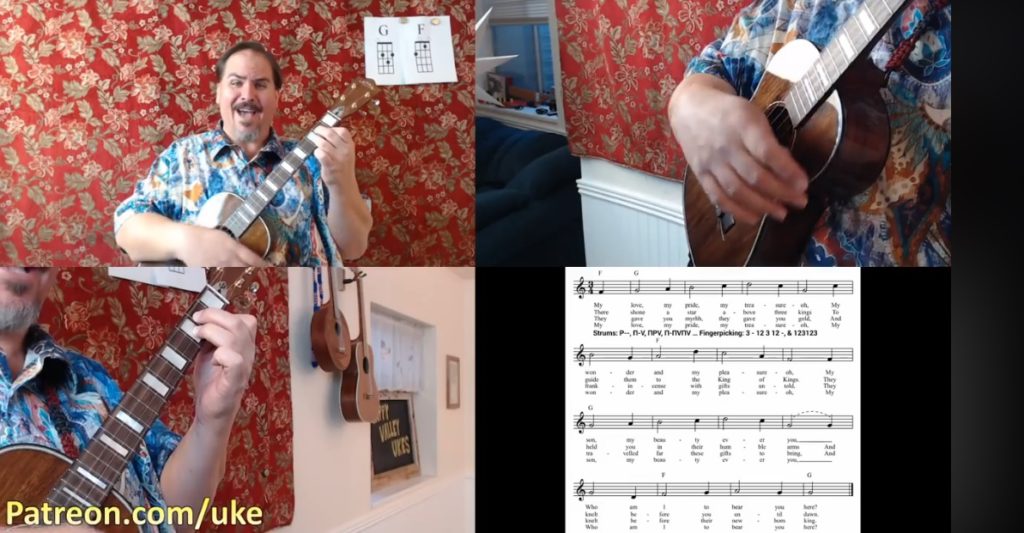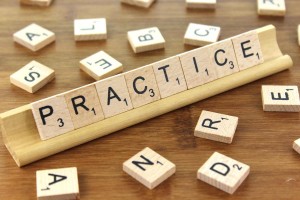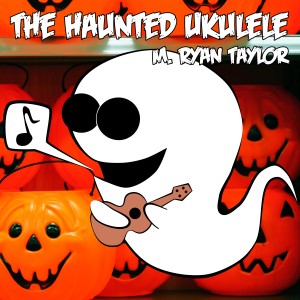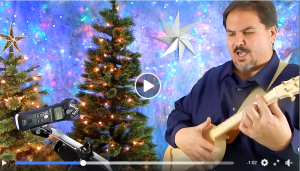Category Archives: All UkulelePlay! Blog Posts
Take on Me (a-ha) for Ukulele Ensemble
More Back to the 80s music for Ukulele Ensembles/Band/Orchestras at http://ukuleleplay.com/for-ukulele-ensembles/
Our House (Madness) for Ukulele Ensemble
More Back to the 80s music for Ukulele Ensembles/Band/Orchestras at http://ukuleleplay.com/for-ukulele-ensembles/
Down Under (Men at Work) for Ukulele Ensemble
More Back to the 80s music for Ukulele Ensembles/Band/Orchestras at http://ukuleleplay.com/for-ukulele-ensembles/
Sweet Child O’ Mine for Ukulele Ensemble
More Back to the 80s music for Ukulele Ensembles/Band/Orchestras at http://ukuleleplay.com/for-ukulele-ensembles/
James Hill : Ukulele Players You Should Get to Know
Maybe he really needs no introduction in the ukulele community … but I keep running into people who haven’t heard of him, and they should have. James Hill is actually in my top 3 most inspiring ukulele players in the world … folk that completely changed the way I think about the instrument and what it can do (the others are Jake Shimabukuro and Taimane Gardner … later posts). Here are three of my favorites from his output …
My only complaint: James Hill is such an amazing, virtuosic player, but he only releases one or two performance videos a year (more, please!). I also think he’s a great songwriter (more, please!). That said, I know he focuses a lot of his energy toward his education and teaching … which, from personal experience, I know is where there is great demand and a living to be made. However, if you’re left wanting more, like me, there are a lot of bootleg videos of James out there on the web (just do a search) … so perhaps that’s a good strategy to take as well, let the fans video you and promote you. 🙂
Just Like Heaven (The Cure) for Ukulele Orchestra / Band / Ensemble
Just Like Heaven (The Cure) for Ukulele Orchestra / Band / Ensemble is now available at Sheet Music Plus … Another tune arranged for The Happy Valley Ukes on our 2020 Original Utah Uke Fest theme of BACK TO THE 80s. Distance learners can practice along with us at patreon.com/uke (all rehearsals recorded and available to patrons). Find more music for ukulele groups at http://ukuleleplay.com/for-ukulele-ensembles/.
Ryo Natoyama : Ukulele Players You Should Get to Know
There are a lot of ukulele players out there that I greatly admire in their playing, style and personality. Today I’m starting a series of ‘get to know you’ posts and am starting with the amazing virtuoso Ryo Natoyama … He’s soooooo good. Here’s a tender one:
AND, here’s one where he absolutely shreds his ukulele:
Hope you enjoyed those! If you did, the best way to start supporting artists like these is to subscribe to their channels, hit their like buttons and leave encouraging comments! 🙂
A Free Ukulele Christmas Gift for You that You can Share Freely with Others
Get a FREE PDF of the 2-Chord Christmas Songbook, along with access to separate video tutorials for each song (covering chords/strumming/fingerpicking) by signing up for my Uke & Me email list at https://uke-and-me.ck.page/e4293e3e25 (the Uke & Me newsletter posts online instructional content and performances).

I’ve been wanting to create this instructional course on these Christmas songs for years, but finally was able to make the time for it late in November. Includes music and instruction for: Apple Tree Wassail, As Joseph Was a Walking, Behold that Star, Carol of the Bagpipers, Christ Was Born On Christmas Day, Christmas Eve is Here, Cold is the Morning, Come Running You Shepherds, God Bless All, He is Born, Hear Them Bells, Hey Ho Nobody Home, I Saw Three Ships (two versions), Mary Had a Baby, My Pride My Love My Treasure-Oh, O Christmas Tree, O Leave Your Sheep, O Little Town of Bethlehem, Patapan, Quickly Now, O Shepherds, Rise Up Shepherds and Follow, Star in the East, Still Still Still, The Cherry Tree Carol, The Huron Carol, The Little Cradle Rocks, The Sleep of the Child Jesus, Tomorrow Shall Be My Dancing Day, Truth From Above, Wassail, Wassail, All Over the Town, Welsh Carol, What Shall We Give?, & Wondrous Love.
Please feel free to gift this information on to anyone you know who plays the ukulele, or think might enjoy learning, or even just singing along. Two-chord songs are a great way to start out on ukulele as well as other fretted instruments, and, as I show in the videos, can be fun to play around with for more intermediate and advanced players by adding fun strums, fingerpicking and chord inversions. Hope you enjoy it. 🙂
Merry Christmas!!!
Ryan
The Apple Tree Wassail : 2-Chord Carols
What I Love About this Carol
Quite simply, I love the joyous ridiculousness of this wassail tune … the very thought of walking out to your apple trees in the middle of winter, spreading some good cider on their roots, and singing a boisterous song to them (all to bring in a bountiful harvest the next season) puts a bemused smirk on my face and cheers my heart. You don’t have to have apple trees to enjoy a sip of homemade wassail and singing with friends.
Find performances & tutorials for all 34 songs in the 2-Chord Christmas Songbook (tutorials cover song melodies, lyrics, transposition, chords, strumming and fingerpicking) at https://www.youtube.com/playlist?list=PLa626nR993OyV00-C0Yl23SnpLlZce8Wk … get printed copies of the book from https://amzn.to/2qWY42H … free pdf of the book for members at https://www.patreon.com/uke
New Arrangements for Ukulele Orchestra (A View to a Kill, Axel F, Back to the Future)
New music for Ukulele Orchestra / Ensemble arranged for the 2020 Original Utah Uke Fest, which will be themed Back to the ’80s.
Join the Happy Valley Ukes at https://www.patreon.com/uke or get the arrangements on Sheet Music Plus for your own ukulele ensemble.
Demo Videos
Instrumental & Soloing Tips from the Ukulele Community
 I’m a pretty good ‘rhythm’ ukulele player … meaning I have a strong set of strumming and fingerpicking skills to lay down an accompaniment for my singing. I’m an O.K. ukulele instrumentalist … meaning I stay ahead of all my students in the Ukulele Youth Choir I direct and most of the members in my group, the Happy Valley Ukes. There are about three members of that latter group that really push me and make me want to be a better player. So, I’m planning on diving into some intense daily playing again.
I’m a pretty good ‘rhythm’ ukulele player … meaning I have a strong set of strumming and fingerpicking skills to lay down an accompaniment for my singing. I’m an O.K. ukulele instrumentalist … meaning I stay ahead of all my students in the Ukulele Youth Choir I direct and most of the members in my group, the Happy Valley Ukes. There are about three members of that latter group that really push me and make me want to be a better player. So, I’m planning on diving into some intense daily playing again.
I’m no stranger to practice routines, and I’ve written some practice advice for rhythm playing and self-accompaniment. Lately, I’ve been rehearsing some piano pieces that I plan to do in a concert soon and have picked up some more tips there that I think might transfer well over to ukulele (subject of a future post).
Anyway, I thought it would be a good idea to poll the collective wisdom of the ukulele community, via some Facebook groups, for their tips as well. Some of the ideas parallel things I probably would have said on my own, but there are other things in there I probably wouldn’t have thought about or considered. So here is some collective wisdom (though on some of these I couldn’t quite tell if they were serious, or poking fun at me for even asking: I’ll let you decide which ones are useful to you) . . .
- My tip is simply, repetition repetition repetition is the only way to improve and master any musical instrument. – Michael Nordahl Wallem
- To wit: Solo is best practiced ALONE! – Daniel Wesley
- Always practice with a metronome! Start very slowly and pick up the tempo as your accuracy improves. – Craig W Hurst
- Use iReal, BandInABox or a reasonable backing track software to practice soloing. – Tom Towle
- Learn to read music, both in jazz charts AND ukulele tablature…learn lyrics so you can ‘sing’ the melody in your head well enough to be able to contrive variations to it over the harmony. -Tom Towle
- Learn and practice scales in all keys … major, natural and harmonic minors, dominant, blues and whole tone half tone. Learn the importance of the root note and where to find it. And practice as many hours a day as possible. For a start. – Nick Bennett
- Study the blues….be able to play the blues at any point in an improvised line.
Listen to the incredible Benny Chong constantly and tastefully play blues riffs throughout The Nearness of You. – Tom Towle - Learn to read music, both in jazz charts AND ukulele tablature…learn lyrics so you can ‘sing’ the melody in your head well enough to be able to contrive variations to it over the harmony. – Tom Towle
- Little and often to get fingertips hardened. Use a metronome and tap foot in time with it to get accurate timing. – Colin Lamb
- When I am soloing or leading I personally use a pick. It helps to practice to backing tracks. -Scott VanderStouw
- Learn things in pieces and start slow. – Reham Kcirtap
- If you mean single note soloing and improvisation: Learn about chord tones, not just scales. Develop vocabulary, small licks that then can be connected, varied, developed, etc. See D Minor Pentatonic Scale Uke Tutorial. -Jeff Weinberger
- Tom Towle also provided a link to a tutorial where he works through a solo in Uke Go to My Head, demonstrating the process he goes through to take a fairly-sophisticated jazz tune from scratch to something cool.
- Learn the most difficult parts of the song first. In very challenging songs this helps to ensure that you learn the whole song. – Jon Kent Clayburn
- LISTEN! Listen to the songs you want to play, to the melodies until you know them inside out, until you can hum the melodies when someone wakes you up at night. Learn by EAR, not by tabs or notes. Follow the chords to find the melodies. Be courageous enough to improvise. Never try to replicate anything 1:1 (it‘s been done already, so why do it again?). Give the tunes/melodies you play something of your personality. But again, most important: forget about tabs and notes and LISTEN, and learn by ear. – Martin Neuhold
- Chord melodies are where it’s at! Before attempting something more complex, learn the inversions for a simple three chord song thoroughly. Remember to adjust the key of the song to fit in the range of the ukulele. Then, use the notes of the melody to build inversions. Finding the perfect chord to fit the mood of the song (and one that you can actually play) is the mark of mastery. You may not have to play every string every time. You may run out of room as you climb up or down the neck, so get creative! Study Roy Smeck, Del Rey, Herb Ohta, and Lyle Ritz, and practice! – Donald Whitley
- I have found that when playing solo, I might follow the chords, but try and pick the melody instead of strumming. It works beautifully with Aloha Oe and Silent Night. – Bob Carmichael, Temecula Valley Ukulele Strummers
- Little and often, as the actress said to the bishop. – Ernie Halls
- Learn the correct/efficient fingering. – Midori OnQuest
- Don’t let your practice be strictly off paper. Put on a background track, and play accompaniment to it. They come in all keys. – Jól Retzloff
Now some of this applies more to improvisation, and some to learning a written solo … there’s a lot of good food for thought on both fronts. A number of people mentioned practicing to backing tracks, which is a great idea. I’ve been a composer for a long time, and remember when Band in a Box first came out … it was a complete joke, but looking at the current version I was amazed at the quality of the sounds coming out of the program … something new has made it into my wish list. Anyway, there are enough ideas here to keep me busy for several years, so thanks to all who contributed their thoughts.
Love Shack for 3 or More Ukuleles, Vocals & Opt. Bass
- LOVE SHACK by The B-52’s arr. by M. Ryan Taylor for 3 or more Ukuleles, Vocals and opt. Bass (on Sheet Music Plus)
Find more music for ukulele ensembles at http://ukuleleplay.com/for-ukulele-ensembles/
Haunted Ukulele Workshop
 Join me at my studio in American Fork this Saturday for a hair-raising ukulele experience with The Haunted Ukulele. From super-easy two-chord ballads about Frankenstein and the Monster of Loch Ness to more complex and jazzy selections about ghosts, vampires, skeletons and even The Teddy Bear’s Picnic … we’ll sample this “Monster Collection of 59 Spooky Songs” while learning some new chords, strums and fingerpicking techniques. Bonus: Everyone attending the workshop will get a free eBook copy of The Haunted Ukulele.
Join me at my studio in American Fork this Saturday for a hair-raising ukulele experience with The Haunted Ukulele. From super-easy two-chord ballads about Frankenstein and the Monster of Loch Ness to more complex and jazzy selections about ghosts, vampires, skeletons and even The Teddy Bear’s Picnic … we’ll sample this “Monster Collection of 59 Spooky Songs” while learning some new chords, strums and fingerpicking techniques. Bonus: Everyone attending the workshop will get a free eBook copy of The Haunted Ukulele.
What: The Haunted Ukulele Workshop
When: Saturday, October 12th at 10am
Where: Ryan’s Studio, 856 N 350 W, American Fork
Cost: $15 ($10 for Patrons at Patreon.com/Uke)
RSVP and Special Requests (Click to Open RSVP Form)
Important Parts of the Ukulele (a Beginner’s Guide)
A beginner’s intro to the parts of the ukulele … body, lower & upper bouts, neck, head stock, tuners, strings, fret wires, fret numbers, fret markers, saddle, bridge, and, not to be left out, finger numbers. Also some tips about string stretch, dressing your frets and adjusting the nut and saddle.
Power Up Ukulele
Some years ago I had this idea to create a step by step ukulele course around a game dynamic … Power Up Ukulele. I got it outlined as a site and added lots of ideas and material, but I never felt like I was finished with it, so I only shared it with a few students on a case by case basis. However, the site does contain a lot of information you might find useful, including paths for increasing your skills in:
- Chords
- Strumming
- Fingerstyle
- Soloing (Scales)
- Instrumental (Tablature)
Something I am particularly proud of is a Strum Shorthand system I came up with for writing down strumming patterns that were more complex than ‘down, down up, up, down up’ using a number of odd characters that are readily available in the most common font typefaces.
Anyway, I chose recently to make all the materials public with the hope that they might inspire some to ‘power up’ their playing. Enjoy!
The Mystery of the Nut
![]() For years, as I’ve taught hundreds of beginning students the various parts of the ukulele on their first day, I’ve speculated on why the nut on the ukulele is called a ‘nut.’ If you’re unfamiliar with the term, the ‘nut’ is the piece of bone (or dense plastic) near the head stock that has grooves cut in it in which the strings rest before traveling up the neck, over the saddle and attaching to the bridge.
For years, as I’ve taught hundreds of beginning students the various parts of the ukulele on their first day, I’ve speculated on why the nut on the ukulele is called a ‘nut.’ If you’re unfamiliar with the term, the ‘nut’ is the piece of bone (or dense plastic) near the head stock that has grooves cut in it in which the strings rest before traveling up the neck, over the saddle and attaching to the bridge.
Nut? Why nut? When talking to my students, my speculation always runs something like this: “I have no idea why this piece is called a nut. Maybe someone took a nut one day, cut a groove in it and stretched a string through the groove to make a simple string instrument.” It would work, and you could slide the nut to different positions to change the pitch, but is this the origin of the term? Who knows.
Wikipedia states, “The word may have come from the German Nut (pronounced “noot”), meaning groove or slot. The nut, however, is called a de:Sattel (“saddle”; also Obersattel) in German, whereas the part of a guitar known as the saddle in English, the surface of the bridge on which the strings rest, is called a de:Stegeinlage or Steg, in German.”
According to this, the origin may have been German, but the Germans call it something else? Hmm. Sounds like a stretch to me. So, I guess I’ll go on speculating with my students about notches cut in nuts. Maybe some day I’ll grab a nice hazelnut and cut my own notch and make a simple canjo or something. 🙂
Learn Hawaiian for Free
 For our Summer session of the Happy Valley Ukes we tackled music about islands, bays and beaches. We did four songs from Hawaii, two of which were in Hawaiian and one mele hapa haole (a song half Hawaiian, half English) … Aue Ke Aloha E, Nu’a O Ka Palai, Aloha ‘Oe and Pearly Shells (the C&H song).
For our Summer session of the Happy Valley Ukes we tackled music about islands, bays and beaches. We did four songs from Hawaii, two of which were in Hawaiian and one mele hapa haole (a song half Hawaiian, half English) … Aue Ke Aloha E, Nu’a O Ka Palai, Aloha ‘Oe and Pearly Shells (the C&H song).
I have a free Duolingo account, and was scrolling down to see which languages they had available … I started with Spanish, but now am learning French, German, Italian (singing languages I started at university) and HAWAIIAN! Yes, they have a free Hawaiian course. I was so surprised.
I’m still in the ‘basics’ section, but it is a lot of fun to start piecing together the syntax of what I’ve been singing without really knowing what I’ve been singing (something you can get used to when singing a lot of different languages, but would of course be better with real understanding).
Although the ukulele is not technically a Hawaiian instrument (it migrated there from Madeira), it does have a really strong connection with Hawaii and they can take credit for making the instrument famous … just thought I’d share this free way to expand your appreciation of Hawaiian songs, language (which is beautiful) and culture. You can sign up for free at Duolingo.
If you’re interested in learning the Hawaiian songs I mentioned above: All our Summer rehearsal sessions are available to watch at our Patreon page: Happy Valley Ukes (just make a pledge to support the project at the four dollar Strummer’s level for instant access). Other songs we learned in this session include four Irish tunes in tablature, Jamaica Farewell, Day-O, Moonlight Bay, By the Beautiful Sea, and Surfin’ USA.
The 3 Streams : Advice on Practicing to Put them All Together
 I was recently asked about singing, strumming and fingerpicking all at the same time by someone who attended the festival I organize each year. She wrote, “I am having a terrible time with this issue of singing and playing and wondered if you can give me any direction…?”
I was recently asked about singing, strumming and fingerpicking all at the same time by someone who attended the festival I organize each year. She wrote, “I am having a terrible time with this issue of singing and playing and wondered if you can give me any direction…?”
As far as singing and playing together goes, I do have some practice advice that I often share with my students. Chords, Strumming/Fingerpicking, and Vocals are 3 different streams of information. Just like a pianist practices the left hand and the right hand separately before putting them together, for best results we should plan to practice these 3 streams separately before trying to bring them together.
- Learn the song … not the chords, or how to play it … just listen to it. Or, if you read music, pluck out the melody. Once you feel you really know the song and can sing it confidently, you’re ready to start practicing your accompaniment.
- Scan through the song you are practicing and look for any chord combinations that you’ve never seen before. Any two chords that you’ve never seen side by side before ought to be practiced as a chord pair; go gently back and forth between these chords until you feel absolutely comfortable with the transition. Repeat this process for all new chord combinations. This is practice that is best done watching a documentary you enjoy (something that keeps your conscious mind engaged, but doesn’t prove too distracting to keep you from going back and forth, back and forth).
- Play through all the chords in order. This is not the time for any fancy strumming, just strum across each chord with a simple thumb strum. If there are any spots where you feel uncomfortable, go back to step 2 and practice those chord pairs.
- Once you’re sure you’re comfortable with all the chord changes you can start singing and strumming the chords. Once again, this is not the time for any fancy strumming or fingerpicking, just get those chords in the right places with your voice. This is a good time to break out a metronome to keep you accurate and honest. Practice slowly at first, a tempo where you can get everything right. Then, slowly increase your speed until you get it to the tempo you want.
- Fancy strums and fingerpicking techniques are icing on the cake. The cake will still be tasty without them. If you’re wanting frosting, it must be mixed separately and not baked with the cake. Strumming and fingerpicking should be practiced separately, without worrying about chords, melody or words. Again, this practice is best done with some kind of low-key television program running, because it is repetitive and dull and none of us really want to do it. We want to put it all together, now. Be patient. Practice the technique until you can do it and carry on a conversation at the same time. Go slow. Slow practice = fast progress.
- Once you’re absolutely sure your strumming and fingerpicking techniques are committed to your muscle memory and occupy not one wit your conscious effort, it is now time to try and put all 3 streams together. Once again, go super slow and work for accuracy, not speed. 10-20 slow passes through a song will be worth HUNDREDS of fast passes filled with errors. Time is on your side … don’t be in a rush … let it seep in deep.
- If you care to at this point, you can add decorations to your cake. These include things known as ‘intros’ ‘interludes’ ‘instrumentals’ and ‘fills’ where you can show off and add a professional touch. Honestly, I do not do this with the majority of my songs, because singing is my first love and I learned to play the uke to support my voice, not the other way around. But, some people, like James Hill, pull this off magnificently and are worth listening to for ideas.
If you’re interested in learning more about strumming, fingerpicking and soloing techniques, I put together a free website that covers a lot of material at http://powerup.ukuleleplay.com/ and if you’re looking to learn a bunch of cool songs with these principles applied, you can rehearse along with my group, The Happy Valley Ukes, from anywhere in the world by visiting our Patreon project at https://www.patreon.com/uke and pledging at the $4 a month level for full access to rehearsal videos and links to music.
What a Wonderful World with ‘up the neck’ chord diagrams
 A new arrangement of the song IZ made a ukulele classic, now available on Sheet Music Plus.
A new arrangement of the song IZ made a ukulele classic, now available on Sheet Music Plus.
- A new What a Wonderful World sheet music single includes ‘up the neck’ chord diagrams for ukulele that fits with the below choral arrangement. The vocals can be sung as a solo, duet or trio.
- What a Wonderful World arr. by M. Ryan Taylor for SA Choir and Piano and optional chord indications.
- A free What a Wonderful World – Minus / Rehearsal Track is also available that can work with either the above arrangements.
What Sweeter Music? for Renaissance Guitar (or Ukulele)
 What Sweeter Music? : A new setting of Robert Herrick’s poem for Voice & Renaissance Guitar (opt. Ukulele)
What Sweeter Music? : A new setting of Robert Herrick’s poem for Voice & Renaissance Guitar (opt. Ukulele)
WHAT sweeter music can we bring
Than a carol for to sing
The birth of this our Heavenly King?
Awake the voice! awake the string!
Heart, ear, and eye, and everything
Awake! the while the active finger
Runs division with the singer.
View a performance at https://www.facebook.com/uke.n.me/videos/732443843809213/
Peace I Leave With You
- Peace I Leave With You (John 14:27) : Vocal Solo with Flute or Clarinet and Ukulele Tablature
As a teenager, I wrote a choral version of this text that has stuck with me all these years. At times of stress I have fallen back on this text many times and the melody I wrote all those years back comes readily to mind. I long wanted a solo version of this and eventually put one together. The flute part on here was originally written for a penny whistle, and so has a very moderate range. I also transcribed it for clarinet, as I have a clarinet wielding friend.
Even More Music for Ukulele Ensembles
- Happy (Pharrell Williams)
- Mr. Blue Sky (Electric Light Orchestra)
- Shiny Happy People (R.E.M.)
- SING, Sing a Song (Carpenters / Sesame Street)
Visit For Ukulele Ensembles for the full list of pieces for Ukulele Ensembles.
Finally! New Music for Ukulele Ensembles
I’ve been stockpiling (quite unintentionally) a number of new arrangements for ukulele ensemble … I get them written for my group, The Happy Valley Ukes, and then never get around to posting them on the website. I can only plead the warcry of our day, “I’m so busy!” Anyway, here they are (links to Sheet Music Plus):
- Best Day of My Life (American Authors)
- Hard TImes Come Again No More (Stephen Foster)
- Hawaii Five-O Theme (The Ventures)
- I’d Like to Teach the World to Sing (in perfect harmony)
- You’re a Grand Old Flag (George M. Cohan)
Find these and more arrangements on the For Ukulele Ensembles page of this site.
Bible Camp Songs for Ukulele
 This past Summer I was asked to teach ukulele as part of an Arts Camp at a local church. Once I was assigned the songs to teach, I formatted the music and changed the keys to make it all ukulele friendly. Here’s a free PDF:
This past Summer I was asked to teach ukulele as part of an Arts Camp at a local church. Once I was assigned the songs to teach, I formatted the music and changed the keys to make it all ukulele friendly. Here’s a free PDF:
Included songs are:
- All Night, All Day
- Zion’s Children
- Go Now in Peace
- Little David, Play on Your Harp
- Michael, Row the Boat Ashore
- Rise & Shine
Enjoy!

